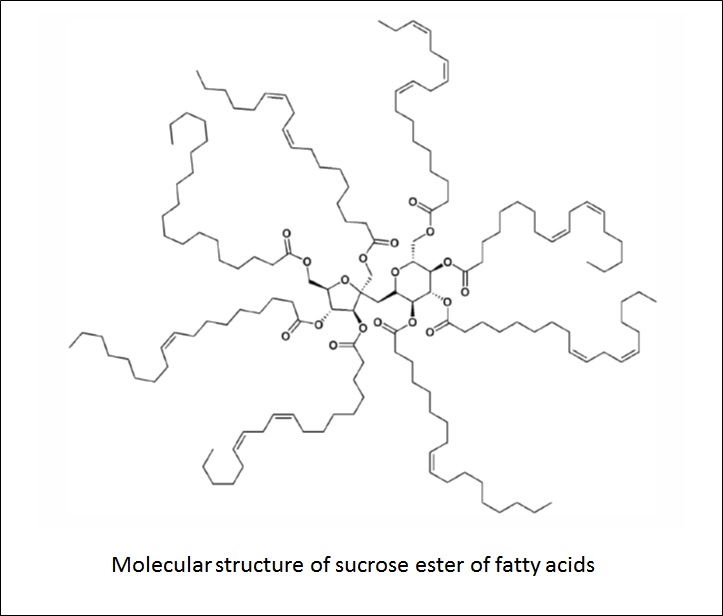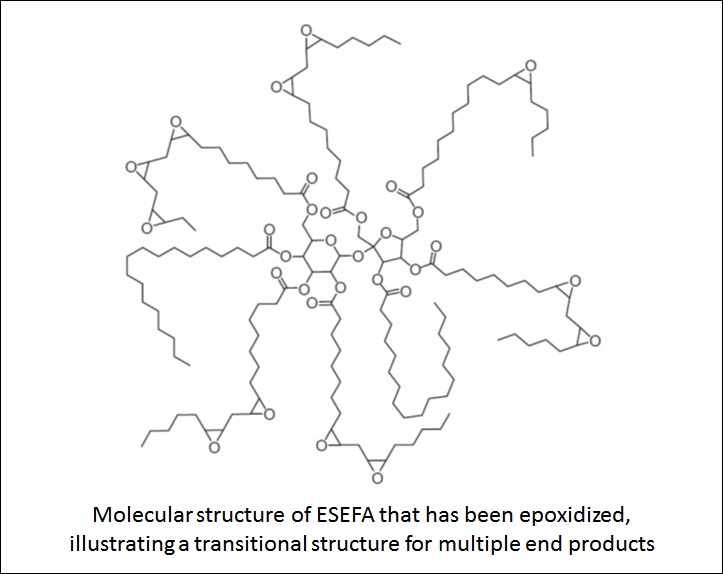Epoxidized Sucrose Esters of Fatty Acids, Extremely Versatile Starting Materials for Making Polymers, Composites, Adhesives, and Coatings (RFT-314, 422, 459, 488, 489, 502, 587)
Invention Summary


Scientists at North Dakota State University have developed a method to produce epoxidized sucrose esters of fatty acids (ESEFAs). These are macromolecules with a rigid sucrose core from which 8 arms extend, the arms derived from fatty acids. ESEFAs have extraordinary versatility with respect to potential uses and manufacturing processes. This versatility is derived from the well-defined, compact structure, which imparts very useful characteristics in a wide range of thermosets, polyurethanes (non-isocyanate), and other polymers; composites; adhesives; and coatings. ESEFAs aren't just versatile in terms of end use, but also in terms of chemistry (examples include epoxy anhydrides, methacrylates, acrylates, and polyols) and curing options (including, but not limited to, using cyclic anhydrides, blocked acids, natural acids / water / solvents, novel isorbide trimer, cationic curing, curing with melamine-formaldehyde resins, and photochemical initiation).
Benefits
- Rigid sucrose core and compact structure impart hardness
- Multiple fatty acids arms may be used to achieve high cross-link density and rapid gelation
- High modulus, hard, and ductile, even with well over 50% bio-based content
- Colorless and transparent
- Formulations so that the color of the end product is not changed
- Formulations using naturally occurring carboxylic acids as cross-linkers produce biodegradable and VOC-free thermosets that are biodegradable
- Non-isocyanate options for polyurethanes
Technology
Sucrose and vegetable oils are first used to produce sucrose ester resins of vegetable oil fatty acids. These macromolecules are then epoxidized to produce ESEFAs, which are then available for the diverse applications described here and in other publications.
Issued Patents
This technology is patented in the U.S. and Europe and is available for licensing/partnering opportunities.
Relevant Patents:
- RFT-314 = Issued US patents 9,096,773, 10,329,377, 10,907,008 and
Issued European patent 2531543
- RFT-422 = Issued US Patent 9,718,987
- RFT-459 = Issued US Patent 10,323,119
- RFT-488 = Issued US Patent 10,072,178
- RFT-489 = Issued US Patent 9,765,233
- RFT-502 = Issued US Patent 10,730,998
- RFT-587 = Issued US Patent 11,639,450
Contact
NDSU Research Foundation
info(at)ndsurf(dot)org
(701)231-8173
NDSURF Tech Key
RFT, 314, 422, 459, 488, 489, 502, 587, RFT314, RFT422, RFT459, RFT488, RFT489, RFT502, RFT587
Inquire about this technology >